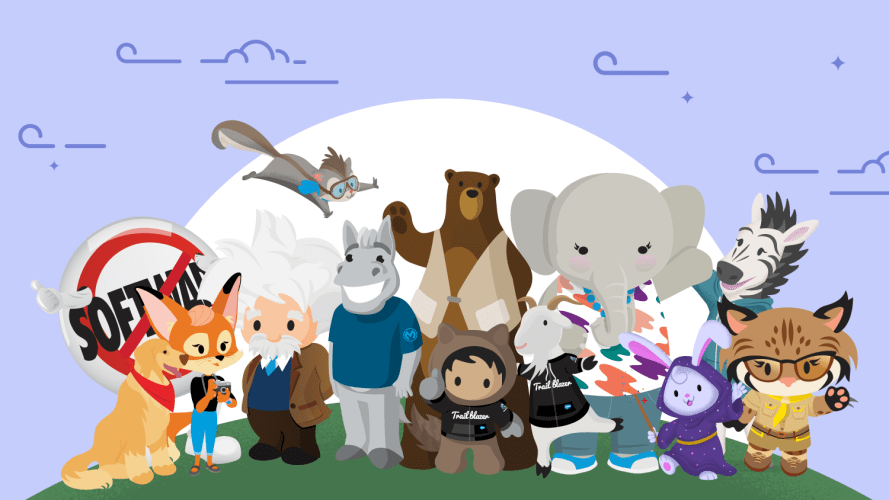IT teams are at the center of AI implementation. This means they are also at the center of a constant tug-of-war between people who reject AI and people who recognize it’s here to stay.
We interviewed three CIO experts to get to the bottom of how AI doesn’t have to be at odds with the people it’s ultimately designed to help.
Why AI implementation is often a headache — and what to do about it
According to our recent State of IT report, three-quarters of IT leaders (74%) anticipate a surge in upcoming business demands, putting a strain on their already stretched teams. Many also face challenges with AI implementation, from lacking a concrete plan to lacking resources — even though 78% see a pressing need for it at their company.
They point to a range of hurdles:
- 71% are concerned about new security threats
- 66% worry about a workforce not quite up to speed on the necessary digital skills
- 60% point out generative AI’s inability to seamlessly fit in existing tech setups
- 59% notice a lack of unified data strategy within their organizations
Despite these challenges, IT departments will be expected to make greater and faster AI implementation in upcoming years. But how?
Salesforce CIO Juan Perez shares the reality of making AI work in organizations: “As a CIO, my number one priority is trust. It doesn’t really matter how great the technology is. If you’re not deploying that technology on a solid foundation of trust, it’s really difficult to gain credibility, protect the company from undue risk, and ultimately feel comfortable that the technology is going to do what you expect it to do.”
Trust is critical to the success of any business initiative. As you continue to work closely with your IT organizations, you may want to consider creating an AI council or having a chief trust officer to provide guidance and oversight.
See next year’s expert predictions in AI
Your CIO job title could soon mean “Chief Intelligence Officer” — your machines could learn to speak like humans. And trusted AI as the only AI? It’s all possible, according to seven top experts.



We interviewed three additional experts – Prakash Kota, senior vice president and CIO of Autodesk, Alvina Antar, CIO of Okta, and Tim Dickson, former CIO of Generac – to give their executive insights. Here are their tips.
Tip #1: Create use cases personal to your organization
At Autodesk, the journey through digital transformation has been all about speed. The company embraced changes like adopting named user models, ensured swift delivery of value to customers, and prioritized a seamless employee experience — all while keeping pace with the fast-moving landscape.
However, the introduction of generative AI brought a new challenge: finding that sweet spot between speed and scale.
At launch, Autodesk’s AI implementation was well received, yet engagement fell over time as the excitement cooled. The big buzz and abrupt crash of interest in AI alerted CIO Prakash Kota to understand why users weren’t embracing new capabilities, and if the reasons were related to trust.
To build that trust, they created compelling use cases to show how AI can help employees in their daily work, according to Kota: “While we want to keep delivering and taking advantage of AI, we also want to learn. It’s about creating champions across different business divisions that can go back and share stories of how impactful it is to consume some of these capabilities.”
As such, start with AI implementation use cases that make a measurable difference for your employees. It’s critical to demonstrate not only a healthy dose of eagerness but also the value and potential to scale.
Tip #2: Build a core team first with reps from various departments open to AI
Though AI gained popularity within tech, some remained hesitant. At Okta, it was the latter: when introducing AI, it was met with initial resistance from certain parts of the business.
CIO Alvina Antar emphasized the importance of strategic planning, especially around AI implementation. Instead of trying to tackle every aspect of AI all at once, it’s better to start by working with various parts of your business that are open to exploring AI’s potential.
This will help create a favorable environment for new technology — one with more sponsorship and less fear. And it’s better to place your people in a position to be proactive with new technology, rather than leaving them to figure it out on their own.
To that end, Okta first began by establishing a core team of individuals from different departments, including business technology, R&D, and customer-first teams. This gave each business unit a voice in the process.
Antar also emphasized that this shift shouldn’t be viewed as a side project but as a priority that demands the company’s commitment and investment.
“Working with our core team focused on [just] that,” Antar said. “Make sure you have a prioritized roadmap like you do with anything else and show progress and the impact and influence through measurable business outcomes, which then allow you to extend.”
The lesson shared from Okta underscores the importance of starting with willing business units, overcoming resistance, and building a cross-functional team.
Tip #3: Take a step-by-step approach to build a culture of acceptance
Tim Dickson, who now is the chief digital and information officer at Regal Rexnord, emphasizes the significance of gradually introducing new capabilities. In his time leading as CIO of Generac, Dickson introduced digital transformation models like Agile, Scrum, DevOps, and customer insights: helping the IT organization to embrace new ways of working.
He highlighted the importance of getting everyone on the same page within your company before focusing on those priorities for your customers. For Generac, this was especially true for data and AI implementation.
According to Dickson, the acceptance and adoption of emerging technologies, especially AI, are direct outcomes of a company’s culture. In the context of a company like Generac, where an engineering culture prevails, he recognized the need to demonstrate new technologies in tangible ways.
To achieve this, Dickson started by presenting IT-driven insights to the business, followed by predictive modeling, and eventually moved towards showcasing the capabilities of generative AI.
His approach was grounded in the belief that jumping directly into advanced AI capabilities wouldn’t have been effective without first building a culture that accepts and understands AI. “I don’t think we could have jumped directly into gen AI, as a 64-year-old manufacturing company,” he said. “And now we’re ready, in my opinion, to accept.”
Dickson believes that generative AI is the biggest value-add their company had ever seen. “If we didn’t teach and coach and embrace and do all those things behavior-wise and culture-wise,” he said, “we’d never be where we are today.”
AI implementation can be complex, but the silver bullet is simply to take it one step at a time. And your success will rely not only on technology, but on building trust and innovation across your organization.
AI support by your side
Incorporating AI can look different for different organizations. Our experts are ready to answer your questions and help guide you through the process.































